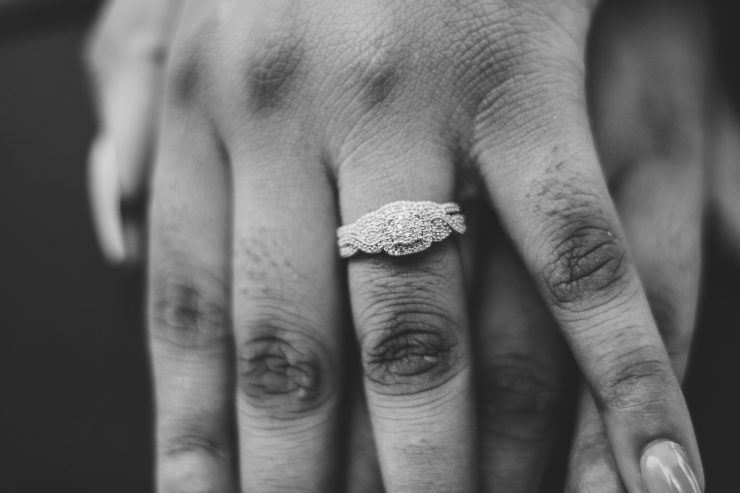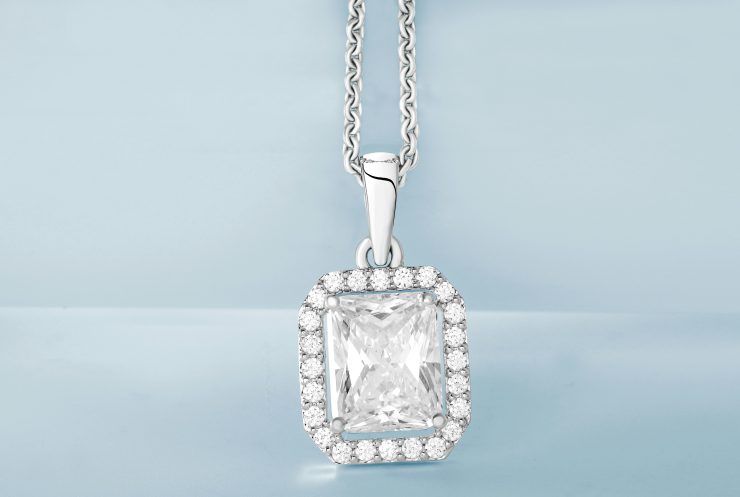Timeless Symbolism and Human Connection
Natural diamonds have long held a prominent place in human culture, often symbolizing love, status, endurance, and commitment. Their geological formation, taking billions of years under immense pressure, is frequently associated with emotional and psychological metaphors of resilience and inner strength. For many individuals, owning a natural diamond becomes an embodiment of deep emotional significance, whether it’s a gift marking a life milestone or an heirloom passed through generations. These gems serve not only as material objects but also as vessels of memory and meaning. Psychological attachment to diamonds often stems from these associations, giving rise to sentimental value that may far outweigh their appraised market price. Studies in consumer psychology have shown that symbolic purchases—especially those rooted in tradition—often yield long-lasting emotional satisfaction. Thus, natural diamonds are not merely luxury items but also enduring icons that fulfill important psychological roles in memory retention, legacy building, and personal identity.

Emotional Reinforcement through Life Events
The emotional benefits of owning natural diamonds are often most apparent in the context of life-changing events such as engagements, weddings, anniversaries, or births. These events are not only celebrated with diamonds but are also emotionally reinforced through them. The act of gifting or receiving a natural diamond in such moments amplifies emotional resonance, creating what psychologists call a “ritualistic reward system.” This psychological reinforcement can offer emotional stability, particularly in relationships where a diamond becomes a tangible manifestation of love and loyalty. The permanence of a diamond, which is known for being one of the hardest natural substances, metaphorically mirrors the desired permanence of personal bonds. Emotional satisfaction derived from these rituals is typically long-lasting because it is linked with a physical token that can be revisited repeatedly. Over time, the diamond becomes inseparable from the memory of the event, enhancing its sentimental importance beyond any resale or appraised monetary value.
The Role of Status and Self-Esteem
Beyond emotional symbolism, natural diamonds also carry significant psychological implications in terms of social status and self-esteem. From a sociological perspective, the display or ownership of high-value items such as diamonds can contribute to one’s perceived social standing. This aligns with the theory of conspicuous consumption, where individuals use luxury goods to signal wealth, taste, or prestige. However, the psychological benefit goes beyond mere showmanship. Possessing a natural diamond often contributes to self-worth and personal achievement, particularly for individuals who purchase such items as rewards for personal milestones. In these contexts, the diamond serves as both a reward and a motivator, reinforcing one’s sense of accomplishment and self-recognition. Moreover, some psychological studies suggest that self-gifting behaviors involving luxury items can boost mood and overall mental well-being. For women and men alike, wearing a natural diamond can elevate confidence levels and act as a daily reminder of one’s value—an intangible benefit that holds strong emotional appeal.
Attachment and Identity Through Ownership
Natural diamonds often become more than just accessories; they can form integral parts of personal identity. This deep attachment is facilitated through a concept known as the “extended self” in psychology, which posits that people often see possessions as a reflection or extension of who they are. A diamond ring inherited from a grandmother, for instance, may become inseparable from the owner’s sense of heritage, values, and familial connection. In such cases, the emotional value is constructed not only by the stone’s beauty or cost but by its symbolic weight. Ownership may thus generate feelings of pride, rooted in both personal history and societal context. Over time, natural diamonds can come to represent continuity and belonging, particularly when they remain in the family for multiple generations. This generational continuity further enhances psychological stability by creating a legacy that transcends the individual, contributing to a broader, more enduring sense of purpose and identity.
Resilience and the Power of Permanence
Another psychological dimension of owning natural diamonds lies in the concept of permanence, which offers a form of emotional grounding. Unlike most consumer products that degrade or become obsolete, natural diamonds maintain their form, brilliance, and relevance across time. This permanence can be comforting in a world that is otherwise marked by rapid change, uncertainty, and disposable culture. Psychologists argue that the human brain is naturally drawn to symbols of stability as anchors for emotional well-being. Natural diamonds, because of their durability and timelessness, serve this stabilizing function effectively. This is especially true during times of personal loss or upheaval, where the presence of something unchanging—like a diamond heirloom—can offer emotional solace. The knowledge that a diamond will last beyond one’s own lifetime introduces a psychological sense of continuity, legacy, and existential reassurance. Such long-term benefits make natural diamonds not just aesthetically valuable but also emotionally grounding possessions.

Contrast with Monetary Value and Market Realities
While the emotional and psychological benefits of owning natural diamonds are profound, they often stand in stark contrast to the fluctuating nature of their monetary value. The resale market for natural diamonds can be unpredictable, with resale prices frequently falling short of original purchase prices. This disparity raises important questions about the perceived versus actual value of diamonds. From a psychological standpoint, this divergence may not significantly affect owner satisfaction. Research in behavioral economics suggests that when emotional attachment to a possession is high, owners tend to overestimate its market worth—a phenomenon known as the “endowment effect.” This cognitive bias helps explain why many people retain diamonds despite lackluster financial returns. The emotional security and symbolic richness often outweigh concerns about liquidity or market depreciation. In essence, the subjective value—rooted in identity, memory, and meaning—can become far more influential than objective financial metrics when it comes to the long-term retention of natural diamonds.
Intergenerational Legacy and Emotional Continuity
Another vital psychological benefit of owning natural diamonds is their ability to serve as intergenerational connectors. These gemstones frequently become cherished heirlooms, passed from parents to children, and even grandchildren. This transfer of ownership across generations does more than just preserve material wealth—it establishes a lineage of emotional continuity. Such practices can imbue family members with a sense of rootedness and tradition, both of which contribute to psychological resilience. The heirloom status of diamonds can also promote shared family narratives, reinforcing cultural and familial identities. When a granddaughter receives her grandmother’s diamond pendant, it is not merely a gift—it is a transference of love, values, and history. In this way, natural diamonds facilitate emotional bonding not only between individuals but across time, becoming symbols of enduring familial love. The sentimental reinforcement may outweigh the appeal of selling such items, even in times of financial strain, further underscoring the emotional dominance over monetary considerations.
Therapeutic and Emotional Anchoring Effects
The therapeutic potential of natural diamonds is an emerging area of interest within the field of positive psychology. Some individuals find that wearing or possessing a diamond can serve as an emotional anchor during stressful or traumatic periods. Whether it is worn as a daily reminder of strength or kept safely as a memento of someone loved, the diamond may function as a form of “emotional first aid.” Though not formally used in clinical settings, many people anecdotally describe feelings of calmness, courage, or reassurance linked to their diamonds. This may tie into symbolic reinforcement, where the gem acts as a proxy for inner resilience or external support. Even rituals associated with diamonds—such as cleaning, wearing on special occasions, or sharing their stories—can promote mindfulness and emotional reflection. While not a replacement for therapy, these practices may offer psychological comfort and a sense of personal empowerment, especially when rooted in deeply emotional experiences.
The Role of Naturalness and Authenticity
The “natural” aspect of diamonds also plays a critical psychological role. In an era increasingly dominated by synthetic materials and virtual experiences, natural diamonds appeal to the human desire for authenticity and connection with the Earth. Formed deep within the Earth’s mantle over billions of years, these gemstones evoke awe and wonder that lab-grown diamonds may not replicate to the same extent. The natural origin contributes to their perceived rarity and irreplaceability—two traits that strengthen emotional attachment. Authenticity, both in terms of geological formation and symbolic resonance, tends to amplify the psychological value associated with ownership. For many, knowing that their diamond is unique, unmanipulated, and a true product of nature adds to its emotional allure. This awareness often heightens feelings of appreciation, exclusivity, and pride, making the experience of owning a natural diamond deeply personal. Consequently, the natural formation process itself becomes a powerful component of the gem’s emotional value.
Conclusion: Emotional Value as a Defining Characteristic
While the monetary value of natural diamonds is undeniably significant, it is often the emotional and psychological value that defines the owner’s experience. From representing milestones and personal achievements to fostering intergenerational bonds and emotional well-being, natural diamonds fulfill multifaceted roles that go far beyond financial investment. Their power lies in their symbolism, permanence, and ability to connect individuals to their identity, values, and loved ones. The dichotomy between emotional and monetary value is not one of competition but of complementarity—each reinforcing the diamond’s unique place in human experience. For many, the true worth of a natural diamond is not measured in dollars or carats, but in the meaning it holds, the memories it preserves, and the emotional richness it continues to provide over time.